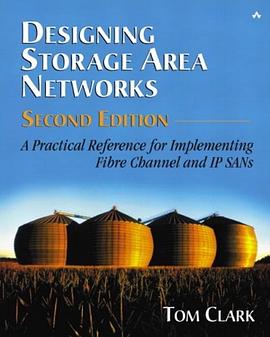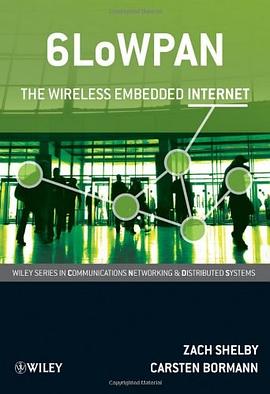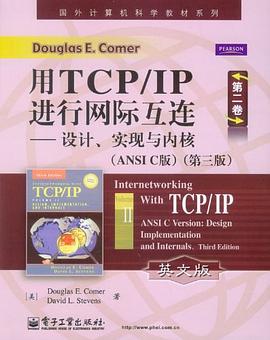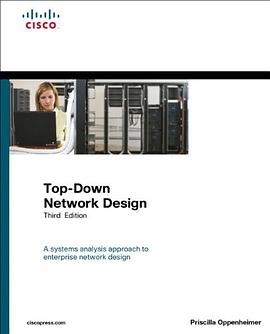

具體描述
This is a fully updated revision of Designing Storage Area Networks. It collapses or removes dated material from the original edition and adds new content, particularly in the area of Fibre Channel fabrics, IP SANs and storage virtualization. Storage area networks are now recognized as the preferred solution for fulfilling a wide range of critical data storage needs for institutions and enterprises. The success of SANs in establishing real end-user value is affirmed by the adoption of the technology by all major solution providers as their flagship server and storage offerings. IBM, Hewlett-Packard, Sun, Dell and others now provide certified SAN configurations for performance, high availability and backup of storage data, while storage vendors such as EMC, Hitachi Data Systems, XIOtech and others offer SAN interfaces on their premier products. While the current market penetration of SAN-based solutions is only 20% of the total storage market, SANs are expected to capture the majority of the market within a few years.
著者簡介
圖書目錄
Preface
The Organization of This Book
Acknowledgments
Chapter 1. Introduction
Section 1.1. Using the SNIA Shared Storage Model
Section 1.2. Example: Carlson Companies
Section 1.3. Text Overview
Section 1.4. Chapter Summary
Chapter 2. Storage and Networking Concepts
Section 2.1. Networking in front of the Server
Section 2.2. The SCSI Architecture
Section 2.3. The Parallel SCSI Bus
Section 2.4. Network-Attached Storage
Section 2.5. Networking behind the Server
Section 2.6. Chapter Summary
Chapter 3. Fibre Channel Internals
Section 3.1. Fibre Channel Layers
Section 3.2. 1Gbps and 2Gbps Transport
Section 3.3. Physical Layer Options
Section 3.4. Data Encoding
Section 3.5. Ordered Sets
Section 3.6. Framing Protocol
Section 3.7. Classes of Service
Section 3.8. Flow Control
Section 3.9. Naming and Addressing Conventions
Section 3.10. Chapter Summary
Chapter 4. Fibre Channel SAN Topologies
Section 4.1. Point-to-Point
Section 4.2. Arbitrated Loop
Section 4.3. Fabrics
Section 4.4. Building Extended Fabrics
Section 4.5. Fabrics and Loops
Section 4.6. Chapter Summary
Chapter 5. Fibre Channel Products
Section 5.1. Transceivers
Section 5.2. Host Bus Adapters
Section 5.3. Fibre Channel RAID
Section 5.4. Fibre Channel JBODs
Section 5.5. Arbitrated Loop Hubs
Section 5.6. Switching Hubs
Section 5.7. Fabric Switches
Section 5.8. Fibre Channel-to-SCSI Bridges
Section 5.9. Fibre Channel Extension Products
Section 5.10. Chapter Summary
Chapter 6. IP SAN Technology
Section 6.1. Ethernet and TCP/IP
Section 6.2. Native IP Storage Protocols
Section 6.3. Discovery in IP SANs
Section 6.4. Quality of Service for IP SANs
Section 6.5. Security for IP SANs
Section 6.6. Wide Area Storage Networking
Section 6.7. Chapter Summary
Chapter 7. IP SAN Products
Section 7.1. Gigabit Ethernet Switches
Section 7.2. IP Routers
Section 7.3. iSCSI Adapter Cards
Section 7.4. iSCSI Storage Devices
Section 7.5. IP Storage Gateways
Section 7.6. iSCSI-to-SCSI Bridges
Section 7.7. iSNS Servers
Section 7.8. Chapter Summary
Chapter 8. SAN Software Products
Section 8.1. Server Clustering
Section 8.2. Tape Backup
Section 8.3. Data Replication
Section 8.4. Distributed File Systems and File Sharing
Section 8.5. Chapter Summary
Chapter 9. Problem Isolation in SANs
Section 9.1. Simple Problem-Isolation Techniques
Section 9.2. Fibre Channel Analyzers
Section 9.3. iSCSI Network Analyzers
Section 9.4. Performance Tools
Section 9.5. Chapter Summary
Chapter 10. Management of SANs
Section 10.1. Storage Network Management
Section 10.2. Storage Resource Management
Section 10.3. Storage Management
Section 10.4. Integration of Storage, Systems, and Enterprise Management
Section 10.5. The Common Information Model (CIM) (Bluefin)
Section 10.6. Chapter Summary
Chapter 11. Storage Virtualization
Section 11.1. What Is Storage Virtualization?
Section 11.2. In-Band and Out-of-Band Virtualization
Section 11.3. Host-Based Storage Virtualization
Section 11.4. SAN Interconnect-Based Storage Virtualization
Section 11.5. Storage-Based Virtualization
Section 11.6. Multivendor Storage Virtualization
Section 11.7. File System and NAS Virtualization
Section 11.8. Tape Virtualization
Section 11.9. Virtualization and the Data Storage Utility
Section 11.10. Chapter Summary
Chapter 12. Application Studies
Section 12.1. Post-Production Video Editing
Section 12.2. Prepress Operations
Section 12.3. LAN-Free and Server-Free Tape Backup
Section 12.4. Server Clustering
Section 12.5. Storage Consolidation
Section 12.6. Internet Service Providers
Section 12.7. Campus Storage Networks
Section 12.8. Remote Tape Vaulting
Section 12.9. Disaster Recovery
Section 12.10. Chapter Summary
Chapter 13. SAN Issues
Section 13.1. Standardization
Section 13.2. Interoperability
Section 13.3. Management
Section 13.4. Convergence
Section 13.5. Chapter Summary
Chapter 14. The Future of SAN
Section 14.1. Integration of SANs into Mainstream Networking
Section 14.2. Ubiquity of Shared Storage
Section 14.3. Virtualization
Section 14.4. Human Factors
Section 14.5. Contributing Technologies
Section 14.6. Chapter Summary
Appendix A. SAN Resources
Section A.1. Standards and Proposals
Section A.2. Fibre Channel Technical and Marketing
Section A.3. IP Storage Technical and Marketing
Section A.4. Related Web Resources
Appendix B. SAN and Related Vendors
Section B.1. SAN System Vendors
Section B.2. SAN Storage and Tape Vendors
Section B.3. Fibre Channel Products
Section B.4. IP SAN Products
Section B.5. SAN Extension
Section B.6. SAN Management and Virtualization
Section B.7. Gigabit Ethernet Vendors
Section B.8. Test Equipment and Verification Labs
Appendix C. The Standardization Process
Appendix D. The Storage Networking Industry Association (SNIA)
Section D.1. Board of Directors
Section D.2. Executive Director and Staff
Section D.3. SNIA Technology Center
Section D.4. Customer Councils
Section D.5. Committees
Section D.6. Technical Workgroups
Section D.7. Industry Forums
Section D.8. SNIA and Other Industry Associations
Section D.9. Summary
Appendix E. The SNIA Shared Storage Model
Revision history
Usage terms
Executive summary
Acknowledgments
The shared storage vision
Why a model for shared storage?
The SNIA Shared Storage Model
Where can it be done?
The services subsystem
Additional topics
Some common storage architectures
Block storage aggregation in a storage network ("SAN appliance")
Summary and conclusions
Appendix F. The SNIA Dictionary of Storage Networking Terminology
Appendix G. SAN Essays
SAN Customers and SAN Vendors
Standardization and Storage Networking Technologies
Standards Compliance versus Interoperability
Storage Resource Management
Going the Distance with Storage Data
Shared Storage for the Masses
SAN Security
Infrastructures and Applications
Disaster Recovery in an Uncertain World
Enabling iSCSI Migration
Bibliography
· · · · · · (收起)
讀後感
評分
評分
評分
評分
用戶評價
Simple Ideas for SAN. How it works, what's the infrastructure.
评分Simple Ideas for SAN. How it works, what's the infrastructure.
评分Simple Ideas for SAN. How it works, what's the infrastructure.
评分Simple Ideas for SAN. How it works, what's the infrastructure.
评分Simple Ideas for SAN. How it works, what's the infrastructure.
相關圖書
本站所有內容均為互聯網搜索引擎提供的公開搜索信息,本站不存儲任何數據與內容,任何內容與數據均與本站無關,如有需要請聯繫相關搜索引擎包括但不限於百度,google,bing,sogou 等
© 2025 book.quotespace.org All Rights Reserved. 小美書屋 版权所有




















